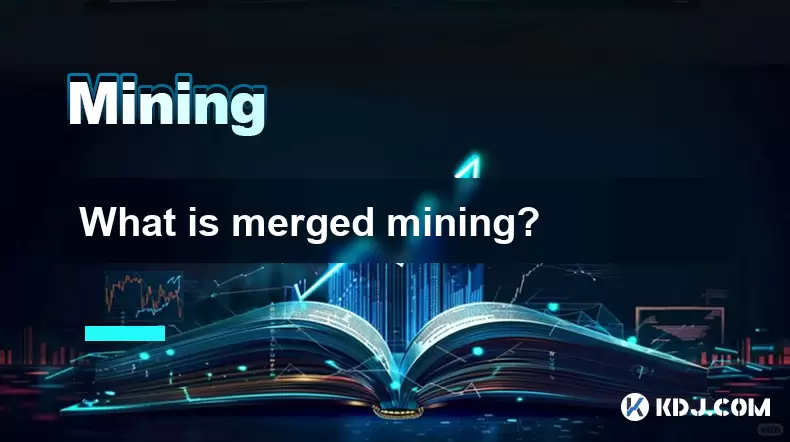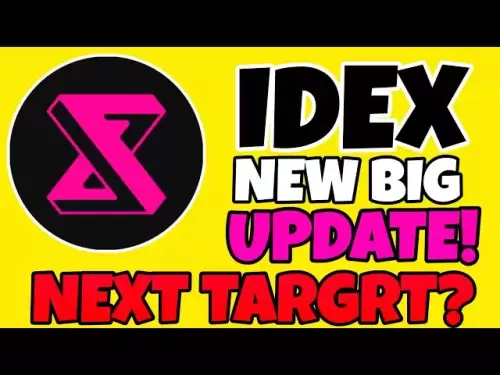-
 Bitcoin
Bitcoin $117,991.5647
-0.03% -
 Ethereum
Ethereum $2,966.4808
0.18% -
 XRP
XRP $2.8076
0.64% -
 Tether USDt
Tether USDt $1.0003
0.00% -
 BNB
BNB $689.9050
-0.63% -
 Solana
Solana $162.0407
-0.80% -
 USDC
USDC $0.9999
0.00% -
 Dogecoin
Dogecoin $0.1995
-1.51% -
 TRON
TRON $0.3001
-1.21% -
 Cardano
Cardano $0.7426
3.25% -
 Hyperliquid
Hyperliquid $47.7978
2.84% -
 Stellar
Stellar $0.4411
16.52% -
 Sui
Sui $3.4267
0.15% -
 Chainlink
Chainlink $15.3148
0.07% -
 Bitcoin Cash
Bitcoin Cash $506.5880
-1.91% -
 Hedera
Hedera $0.2222
12.41% -
 Avalanche
Avalanche $21.2049
1.67% -
 UNUS SED LEO
UNUS SED LEO $9.0606
-0.19% -
 Shiba Inu
Shiba Inu $0.0...01325
-0.86% -
 Toncoin
Toncoin $2.9979
0.32% -
 Litecoin
Litecoin $94.3717
1.13% -
 Polkadot
Polkadot $3.9873
-0.29% -
 Monero
Monero $336.1497
0.92% -
 Dai
Dai $0.9999
-0.01% -
 Uniswap
Uniswap $8.5189
-0.60% -
 Ethena USDe
Ethena USDe $1.0005
-0.04% -
 Pepe
Pepe $0.0...01236
-0.92% -
 Bitget Token
Bitget Token $4.4002
-0.23% -
 Aave
Aave $303.5433
1.05% -
 Bittensor
Bittensor $391.1314
-0.35%
What is merged mining?
Merged mining allows miners to simultaneously mine multiple cryptocurrencies using the same computational power, boosting efficiency and profitability.
Jul 13, 2025 at 03:42 pm

Understanding the Concept of Merged Mining
Merged mining refers to a process in which a miner simultaneously mines multiple cryptocurrencies using the same computational power. This is possible when the cryptocurrencies involved share the same hashing algorithm. The most common example involves Scrypt-based coins, such as Litecoin and Dogecoin, or SHA-256-based coins, like Bitcoin and Bitcoin Cash.
The core idea behind merged mining is that miners can contribute their hash rate to more than one blockchain without compromising efficiency. Since the proof-of-work required for each chain is similar, they can submit valid blocks to both chains independently. This allows smaller networks to benefit from the security provided by larger ones without requiring additional resources.
How Merged Mining Works Technically
In merged mining, a miner constructs a block for each blockchain they are mining on. These blocks contain different data, but the nonce used in the hashing process is shared across all chains. Once a valid nonce is found, it is submitted to all participating blockchains.
Here’s how it works step-by-step:
- Miners build a block template for each cryptocurrency.
- They include a special tag in the coinbase transaction of the secondary chain, linking it to the primary chain's block header.
- A single hash attempt is made using the combined data.
- If the hash meets the difficulty requirement of any chain, a valid block is submitted to that chain.
This method ensures that the work done for one chain also contributes to others, increasing overall profitability without extra energy consumption.
Key Requirements for Merged Mining
For merged mining to be feasible, certain conditions must be met:
- All involved cryptocurrencies must use the same hashing algorithm.
- The secondary chains must support auxiliary proof-of-work (AuxPoW), which allows them to accept work performed on another chain.
- Miners must use compatible software that supports merged mining protocols.
Without these prerequisites, merged mining cannot function properly. For instance, Bitcoin itself does not natively support merged mining, but some altcoins have built-in mechanisms to enable this feature.
Popular Cryptocurrencies Supporting Merged Mining
Several cryptocurrencies have adopted merged mining to enhance network security and provide incentives for miners. Some notable examples include:
- Namecoin (NMC): One of the earliest coins to implement merged mining with Bitcoin.
- Digibyte (DGB): Supports merged mining through its MultiAlgo and MultiShield features.
- Zcash (ZEC): Allows merged mining with other Equihash-based coins.
- Ravencoin (RVN): Uses the KawPow algorithm and supports merged mining with other KawPow chains.
These projects leverage the hash power of dominant chains to protect themselves from 51% attacks and maintain decentralization.
Advantages and Drawbacks of Merged Mining
Merged mining offers several benefits:
- Increased miner revenue: Miners earn rewards from multiple chains without additional hardware costs.
- Enhanced network security: Smaller chains gain protection from larger networks' hash power.
- Energy efficiency: No extra electricity or hardware is needed beyond standard mining operations.
However, there are potential downsides:
- Centralization risks: Large pools dominating the primary chain could influence secondary chains.
- Complexity in implementation: Requires technical coordination between blockchains and miners.
- Reduced independence: Secondary chains become dependent on the health and activity of the primary chain.
Despite these concerns, merged mining remains a viable strategy for improving blockchain security and miner profitability.
Frequently Asked Questions
Q: Can any cryptocurrency participate in merged mining?
A: No, only cryptocurrencies that share the same hashing algorithm and support auxiliary proof-of-work (AuxPoW) can engage in merged mining.
Q: Does merged mining affect the difficulty of mining on each chain?
A: Each blockchain adjusts its difficulty independently based on its own network hash rate, so merged mining does not interfere with individual difficulty adjustments.
Q: Is merged mining profitable for small-scale miners?
A: Yes, because it allows small miners to earn additional rewards without increasing power consumption or hardware investment.
Q: Are there tools or mining pools that support merged mining?
A: Yes, mining pools like Multipool and software like CGMiner or BFGMiner offer merged mining capabilities for compatible cryptocurrencies.
Disclaimer:info@kdj.com
The information provided is not trading advice. kdj.com does not assume any responsibility for any investments made based on the information provided in this article. Cryptocurrencies are highly volatile and it is highly recommended that you invest with caution after thorough research!
If you believe that the content used on this website infringes your copyright, please contact us immediately (info@kdj.com) and we will delete it promptly.
- Crypto, Gold, and Bitcoin: A New York Minute on the Digital Gold Rush
- 2025-07-13 20:30:16
- Crypto iGaming in India: JetTon, LunarBet, and the Evolving Landscape
- 2025-07-13 20:50:16
- XRP Price, Whales, and Payment Tokens: A New Era for Crypto?
- 2025-07-13 20:35:16
- Justin Sun, Tron, and Fee Reduction: A New Era for the Network?
- 2025-07-13 21:10:11
- Shiba Inu, Little Pepe, and the $1 Dream: A Meme Coin Showdown
- 2025-07-13 20:50:17
- XRP Price Gears Up: Will Accumulation Lead to a $7 Breakout?
- 2025-07-13 21:10:12
Related knowledge

How to keep a mining rig cool
Jul 12,2025 at 01:42pm
Understanding the Importance of Cooling in Mining RigsCryptocurrency mining is an intensive process that places heavy demand on hardware components, p...

How much does it cost to start crypto mining?
Jul 13,2025 at 12:22am
Understanding the Basic Costs of Crypto MiningStarting crypto mining involves several upfront and ongoing expenses. The primary costs include hardware...

What is the most profitable crypto to mine?
Jul 13,2025 at 07:00am
Understanding Mining Profitability in CryptocurrencyWhen evaluating the most profitable crypto to mine, it's essential to consider several factors tha...

What do I need to start mining crypto?
Jul 13,2025 at 12:28am
Understanding the Basics of Crypto MiningCrypto mining is the process by which transactions are verified and added to a blockchain, and new coins are ...

How does crypto mining work?
Jul 13,2025 at 11:01am
Understanding the Basics of Crypto MiningCrypto mining is the process through which new cryptocurrency coins are introduced into circulation and trans...

How to find the best Dogecoin mining pool for me
Jul 12,2025 at 04:14pm
Understanding the Role of a Mining PoolWhen mining Dogecoin, joining a mining pool can significantly increase your chances of earning consistent rewar...

How to keep a mining rig cool
Jul 12,2025 at 01:42pm
Understanding the Importance of Cooling in Mining RigsCryptocurrency mining is an intensive process that places heavy demand on hardware components, p...

How much does it cost to start crypto mining?
Jul 13,2025 at 12:22am
Understanding the Basic Costs of Crypto MiningStarting crypto mining involves several upfront and ongoing expenses. The primary costs include hardware...

What is the most profitable crypto to mine?
Jul 13,2025 at 07:00am
Understanding Mining Profitability in CryptocurrencyWhen evaluating the most profitable crypto to mine, it's essential to consider several factors tha...

What do I need to start mining crypto?
Jul 13,2025 at 12:28am
Understanding the Basics of Crypto MiningCrypto mining is the process by which transactions are verified and added to a blockchain, and new coins are ...

How does crypto mining work?
Jul 13,2025 at 11:01am
Understanding the Basics of Crypto MiningCrypto mining is the process through which new cryptocurrency coins are introduced into circulation and trans...

How to find the best Dogecoin mining pool for me
Jul 12,2025 at 04:14pm
Understanding the Role of a Mining PoolWhen mining Dogecoin, joining a mining pool can significantly increase your chances of earning consistent rewar...
See all articles

























































































